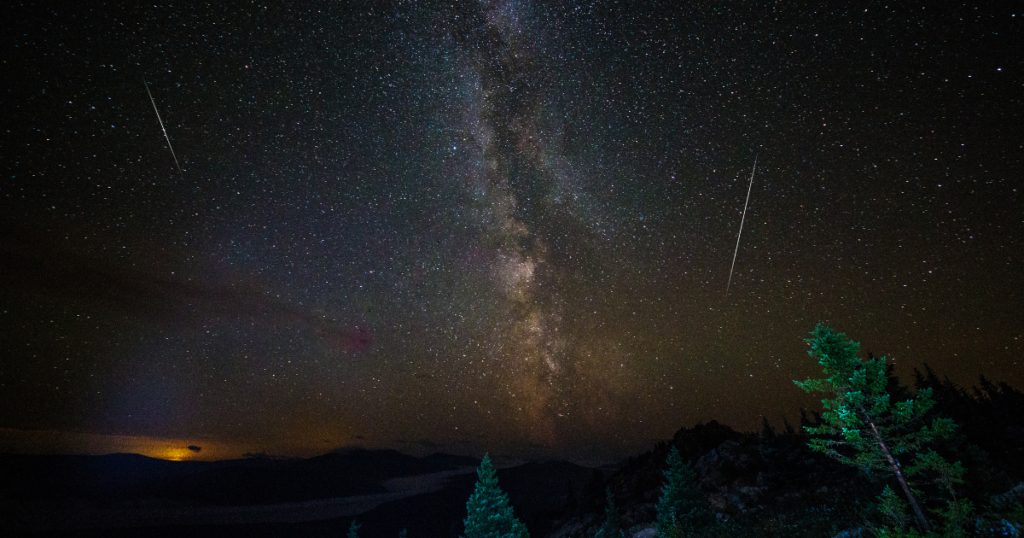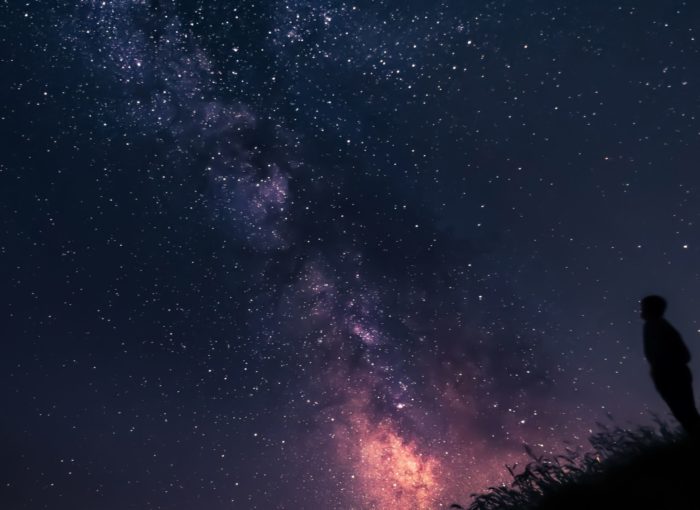Step outside on a clear night and look up at the vast expanse of the night sky. The twinkling stars, the awe-inspiring constellations, and the mysteries of the universe beckon us to explore and unravel their secrets. If you’re a stargazing and astronomy enthusiast, there’s no better way to satisfy your celestial curiosity than by visiting destinations renowned for their stellar views. In this guide, we’ll take you on an astronomical adventure to some of the best destinations around the world for stargazing. So grab your telescope, put on your stargazing hat, and let’s embark on a cosmic journey! ??
Dark Sky Destinations ?
Discover the world’s most pristine dark sky destinations where light pollution is minimal, allowing for optimal stargazing experiences. From national parks to remote islands, these destinations offer unobstructed views of the cosmos. Here are a few top picks:
- Mauna Kea, Hawaii ?? Located on the Big Island of Hawaii, Mauna Kea is renowned for its exceptional stargazing conditions. Its high altitude and lack of light pollution create a perfect setting for observing the stars. The Mauna Kea Observatories, perched atop the volcano, provide access to state-of-the-art telescopes and expert-led stargazing sessions.
- Atacama Desert, Chile ?️? The Atacama Desert in Chile is one of the driest places on Earth, boasting clear skies and virtually no light pollution. Its remote location and high elevation make it an ideal destination for stargazing. Visit the Paranal Observatory or the ALMA Observatory to witness the wonders of the southern hemisphere’s night sky.
- Galloway Forest Park, Scotland ?✨ Escape to the Galloway Forest Park in Scotland, which holds the prestigious title of being the first Dark Sky Park in the UK. With vast woodlands and minimal light pollution, this park offers excellent stargazing opportunities. Join a guided night walk or set up your telescope to explore the wonders of the cosmos.
- NamibRand Nature Reserve, Namibia ?️? In the heart of the Namib Desert, the NamibRand Nature Reserve is a sanctuary for stargazers. Its vast open spaces and arid climate provide a clear view of the night sky. Set up camp under the starry canopy and witness the Milky Way in all its glory.
- Aoraki Mackenzie International Dark Sky Reserve, New Zealand ?️? New Zealand’s Aoraki Mackenzie International Dark Sky Reserve is a stargazer’s paradise. The reserve is nestled within the South Island’s majestic mountains, offering pristine dark skies and breathtaking views. Attend a stargazing tour or hike to an elevated viewpoint for an unforgettable celestial experience.
Remember, these destinations are just a few examples of the many dark sky havens around the world. So pack your telescope, grab a blanket, and prepare for an enchanting journey through the cosmos in these remarkable dark sky destinations ?✨

Observatories and Planetariums ?
When it comes to exploring the cosmos, observatories and planetariums provide a gateway to the wonders of the universe. These dedicated spaces offer immersive experiences, educational programs, and state-of-the-art technology that bring the stars to life. Whether you’re a seasoned astronomer or a curious beginner, visiting these observatories and planetariums will deepen your understanding of the universe and ignite your sense of wonder. Here are some of the top destinations to consider:
- Griffith Observatory – Los Angeles, California ? Located in the iconic Griffith Park, the Griffith Observatory is a must-visit for stargazing and astronomy enthusiasts. Perched on a hill overlooking the city, this historic landmark offers stunning views of the night sky and a range of exhibits that delve into the mysteries of the universe. Attend informative shows at the Samuel Oschin Planetarium, observe celestial objects through telescopes, and join educational programs led by knowledgeable astronomers.
- Hayden Planetarium – New York City, USA ? Situated within the American Museum of Natural History, the Hayden Planetarium is a renowned destination for astronomy lovers. The planetarium’s state-of-the-art Zeiss projector creates a captivating journey through the cosmos, allowing visitors to explore distant galaxies, stars, and planets. Experience mind-blowing shows narrated by renowned astrophysicist Neil deGrasse Tyson and learn about the latest scientific discoveries.
- Mauna Kea Observatories – Big Island, Hawaii ? Perched atop the majestic Mauna Kea volcano, the Mauna Kea Observatories offer an unrivaled stargazing experience. At an elevation of 13,796 feet (4,205 meters), the observatories benefit from the high altitude and clear skies, making it an ideal location for astronomical observations. Take a guided tour and learn from astronomers who work in these cutting-edge facilities, where groundbreaking research is conducted. Witness breathtaking views of the night sky and marvel at the wonders of the cosmos.
- European Southern Observatory (ESO) – Various Locations ? The European Southern Observatory operates several world-class observatories across different locations, including Chile and Germany. With some of the most advanced telescopes in the world, these observatories provide unprecedented views of the southern hemisphere’s skies. From the Atacama Desert in Chile to the Paranal Observatory, these sites offer guided tours, public lectures, and the opportunity to peer into the universe through powerful telescopes.
- The Royal Observatory Greenwich – London, United Kingdom ? As the home of Greenwich Mean Time (GMT), the Royal Observatory Greenwich holds a special place in the history of astronomy. Explore the Astronomy Centre and marvel at the iconic Prime Meridian Line. Visit the Peter Harrison Planetarium and enjoy immersive shows that take you on a journey through space. Don’t forget to stand on the historic Meridian Line and have one foot in the eastern and western hemispheres simultaneously.
These observatories and planetariums are just a glimpse into the world of astronomy. Each offers a unique experience and an opportunity to delve into the wonders of the cosmos. Whether you’re exploring the night sky through a telescope, attending captivating planetarium shows, or learning from expert astronomers, these destinations will ignite your passion for stargazing and broaden your understanding of the universe.

Celestial Phenomena ✨
The night sky is filled with celestial phenomena that never fail to leave us in awe. From meteor showers to eclipses, these rare events provide breathtaking displays and unforgettable memories for stargazing enthusiasts. Here are some of the most captivating celestial phenomena to look out for:
- Meteor Showers: Witnessing a meteor shower is like watching nature’s fireworks show. These stunning displays occur when the Earth passes through the debris left by comets, resulting in shooting stars streaking across the night sky. The Perseids in August and the Geminids in December are two of the most famous meteor showers, offering a dazzling spectacle for stargazers.
- Solar and Lunar Eclipses: Eclipses are celestial events that occur when the Sun, Moon, and Earth align in a specific way. A solar eclipse happens when the Moon passes between the Sun and the Earth, casting a shadow on the Earth’s surface. On the other hand, a lunar eclipse occurs when the Earth comes between the Sun and the Moon, causing the Moon to appear reddish in color. These rare occurrences are both mesmerizing and humbling, reminding us of the vastness of the universe.
- Northern Lights (Aurora Borealis): One of the most enchanting celestial phenomena is the Northern Lights, also known as the Aurora Borealis. This natural light display occurs in high-latitude regions, such as Alaska, Iceland, and Norway. Dancing curtains of vibrant colors illuminate the night sky, creating a surreal and magical atmosphere. The Northern Lights are a true bucket-list experience for any stargazing adventurer.
- Planetary Alignments: Witnessing a planetary alignment is like watching a cosmic dance in the sky. It occurs when several planets in our solar system line up in a specific configuration. Although rare, these alignments can create a mesmerizing visual spectacle. Keep an eye out for events like the Great Conjunction, where Jupiter and Saturn appear exceptionally close together, creating a breathtaking celestial sight.
Remember, celestial phenomena are influenced by various factors, including location, timing, and weather conditions. Research the best times and places to witness these events and plan your stargazing adventures accordingly. Whether you’re lucky enough to catch a meteor shower or witness the awe-inspiring Northern Lights, these celestial phenomena will undoubtedly leave you with a sense of wonder and a deeper appreciation for the mysteries of the universe. ✨?

Stargazing Itineraries ?️
Embarking on a stargazing adventure requires careful planning to ensure you visit the best destinations for celestial wonders. Here are some stargazing itineraries that will take you on a cosmic journey through stunning night skies and unforgettable stargazing experiences.
- Desert Delights: Namibia and Chile ?? Begin your journey in Namibia, where the NamibRand Nature Reserve offers some of the darkest skies in the world. Set up your telescope and marvel at the Milky Way as it stretches across the horizon. Continue to the breathtaking Atacama Desert in Chile, home to the Atacama Large Millimeter Array (ALMA) and several world-class observatories. Experience stargazing at its finest in this remote and otherworldly landscape.
- Iceland’s Northern Lights and Glaciers ??? Start your adventure in Reykjavik and venture into the Icelandic wilderness in search of the awe-inspiring Northern Lights. The dark winter nights provide a perfect canvas for these dancing lights. Continue your journey to Vatnajökull National Park, where you can explore ice caves and witness the magic of the auroras illuminating the night sky above glaciers and snow-covered landscapes.
- Australian Outback and Great Barrier Reef ??? Head to the vast Australian Outback, where remote regions offer exceptional stargazing opportunities. Visit Uluru-Kata Tjuta National Park and witness the stunning display of stars in the clear desert skies. Then, make your way to the Great Barrier Reef for a unique stargazing experience aboard a boat or a secluded island. Combine your celestial exploration with underwater wonders for an unforgettable adventure.
- Mountains and Mysteries: Colorado and Hawaii ⛰️? Explore the majestic Rocky Mountains in Colorado, where high-altitude locations provide exceptional stargazing conditions. Visit the Colorado Springs Astronomical Society’s observatory or attend a star party in the mountains. Continue your journey to the Big Island of Hawaii, home to Mauna Kea, one of the world’s best stargazing sites. Join a guided tour or visit the Mauna Kea Visitor Information Station for an extraordinary celestial experience.
Remember to check local weather conditions, moon phases, and any stargazing events happening during your visit to maximize your chances of witnessing incredible celestial displays. Keep in mind that stargazing itineraries may vary depending on the time of year and the specific celestial events you wish to observe.
As you embark on these stargazing itineraries, always respect the natural environment, follow local regulations, and take precautions to preserve the darkness of the night sky for future generations of stargazers.

As astronomy enthusiasts, we’re fortunate to live in a time where the secrets of the universe are within our reach. By exploring these destinations for stargazing and astronomy, we can connect with the cosmos, gain a deeper appreciation for our place in the universe, and marvel at the wonders that unfold above us every night. So, pack your telescope, embark on a cosmic journey, and let the stars guide you to unforgettable adventures. ??✨
Follow us on Facebook, Pinterest and Instagram for more travel tips and inspiration.
Looking for a reliable travel companion that simplifies your journey? Look no further than Lambus! With Lambus, planning and organizing your trips becomes a breeze. This all-in-one travel app combines itinerary management, booking, and collaboration features to make your travel experience seamless and stress-free. Create detailed itineraries, store important travel documents, collaborate with fellow travelers, and access all your travel information in one place. Download the app now and start planning your next adventure with ease!

